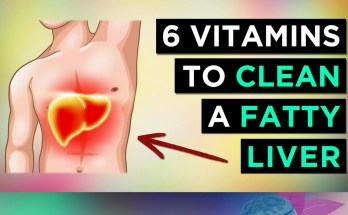What Are Leg Cramps?
Leg cramps, often referred to as “Charley horses,” are sudden, involuntary muscle contractions that can cause significant discomfort or pain. These cramps most commonly affect the calf muscles but can also occur in the thighs or feet. They may last for a few seconds to several minutes and can leave residual soreness in the affected area for hours or even up to a day. While leg cramps are generally harmless, they can disrupt sleep, daily activities, and overall quality of life.
Leg cramps are particularly common during periods of rest or inactivity, such as while sleeping at night. In fact, nocturnal leg cramps affect approximately 50-60% of adults at some point in their lives. Although they are more prevalent among older adults due to natural muscle and tendon changes with age, people of all ages—including children—can experience them.
Common Causes of Leg Cramps
Understanding what triggers leg cramps is essential for managing and preventing them. While some cases remain idiopathic (without a known cause), several factors have been identified as potential contributors:
- Muscle Fatigue and Overuse:
Prolonged physical activity or overexertion can lead to muscle fatigue, increasing the likelihood of cramping during or after exercise. - Nerve Dysfunction:
Issues with nerve signaling between the brain and muscles may contribute to involuntary contractions. - Dehydration and Electrolyte Imbalances:
Low levels of essential minerals like potassium, calcium, magnesium, or sodium can disrupt normal muscle function. - Poor Circulation:
Conditions such as peripheral artery disease (PAD) reduce blood flow to the legs and may trigger cramping. - Sleeping Positions:
Sleeping with your feet pointed downward shortens the calf muscles and may increase the risk of nocturnal leg cramps. - Underlying Medical Conditions:
Chronic illnesses such as diabetes, kidney disease, cirrhosis, thyroid disorders, Parkinson’s disease, and motor neuron diseases like ALS have been linked to frequent leg cramps. - Medications:
Certain drugs—including diuretics (used for high blood pressure), statins (cholesterol-lowering medications), iron sucrose injections (for anemia), and raloxifene (used for osteoporosis)—list muscle cramping as a side effect. - Pregnancy:
Pregnant individuals often experience leg cramps due to increased weight on muscles and hormonal changes affecting circulation. - Aging:
Muscle mass naturally declines with age if not maintained through regular exercise, making older adults more susceptible to cramping episodes.
How To Stop Leg Cramps When They Happen
When a leg cramp strikes unexpectedly, taking immediate action can help alleviate pain quickly:
- Stretching the Affected Muscle:
Gently stretch the cramped muscle by straightening your leg and flexing your foot upward toward your knee (dorsiflexion). For example:- If it’s a calf cramp: Sit down with your legs extended straight out in front of you; pull your toes toward you.
- Massage the Area:
Use your hands to massage the tight muscle gently but firmly until it relaxes. - Apply Heat or Cold Therapy:
- Use a warm towel or heating pad on tight muscles to promote relaxation.
- Apply an ice pack wrapped in cloth if there’s lingering tenderness after the cramp subsides.
- Walk It Out:
Walking around on tiptoes may help stretch out cramped muscles further while improving blood flow in the area. - Stay Hydrated:
Drink water immediately if dehydration is suspected as a contributing factor.
Preventing Leg Cramps: Tips That Work
While not all leg cramps can be avoided entirely—especially those caused by underlying medical conditions—there are several strategies you can adopt to reduce their frequency:
- Regular Stretching Exercises:
Stretching before bed has shown promise in reducing nocturnal leg cramps:- Calf Stretch: Stand facing a wall about one meter away; lean forward with arms extended while keeping heels flat on the ground.
- Hamstring Stretch: Sit on the floor with legs straight; reach forward toward your toes without bending knees.
- Quadriceps Stretch: Stand upright; pull one foot behind you toward your buttocks using your hand for support.
- Stay Active Throughout The Day:
Regular physical activity helps maintain healthy circulation and prevents muscle stiffness from prolonged inactivity. - Hydration Is Key:
Ensure adequate fluid intake throughout the day—especially during hot weather or after exercise—to prevent dehydration-related cramping episodes. - Maintain Balanced Nutrition:
Incorporate foods rich in potassium (bananas), magnesium (nuts/seeds), calcium (dairy products), and sodium into your diet for optimal electrolyte balance. - Adjust Sleeping Positions:
Avoid sleeping with feet pointed downward by using pillows under knees or adjusting mattress angles where possible. - Review Medications With Your Doctor:
If you suspect that prescribed medications might be causing frequent leg cramps as side effects consult healthcare providers about alternatives available options
When To See A Doctor About Leg Cramps?
Although occasional leg cramps are usually harmless persistent severe recurring ones could indicate underlying health issues requiring medical attention Seek professional advice especially if:
- Cramping occurs frequently disrupts daily life
- Accompanied swelling redness weakness numbness tingling sensations
- Suspected links chronic conditions diabetes PAD thyroid dysfunction etc
Doctors diagnose treat root causes accordingly recommend lifestyle adjustments therapies medications necessary alleviate symptoms improve quality life
By understanding potential triggers adopting preventive measures outlined above managing dealing effectively becomes easier empowering regain control over comfort well-being!
Top 3 Authoritative Sources Used in Answering This Question:
- Cleveland Clinic – A highly respected nonprofit academic medical center providing expert-reviewed health information on various conditions including causes treatments prevention strategies related muscular skeletal issues
- American Academy Orthopaedic Surgeons (AAOS) – Renowned organization offering evidence-based guidelines recommendations orthopedic care musculoskeletal health
- National Institute Diabetes Digestive Kidney Diseases(NIDDK) – Trusted government resource delivering comprehensive insights chronic diseases metabolic disorders
Here’s If You Love to Read More: 5 Essential Vitamins to Boost Muscle Growth Naturally
Here’s If You Love to Watch Movie: MyFlixerHD





